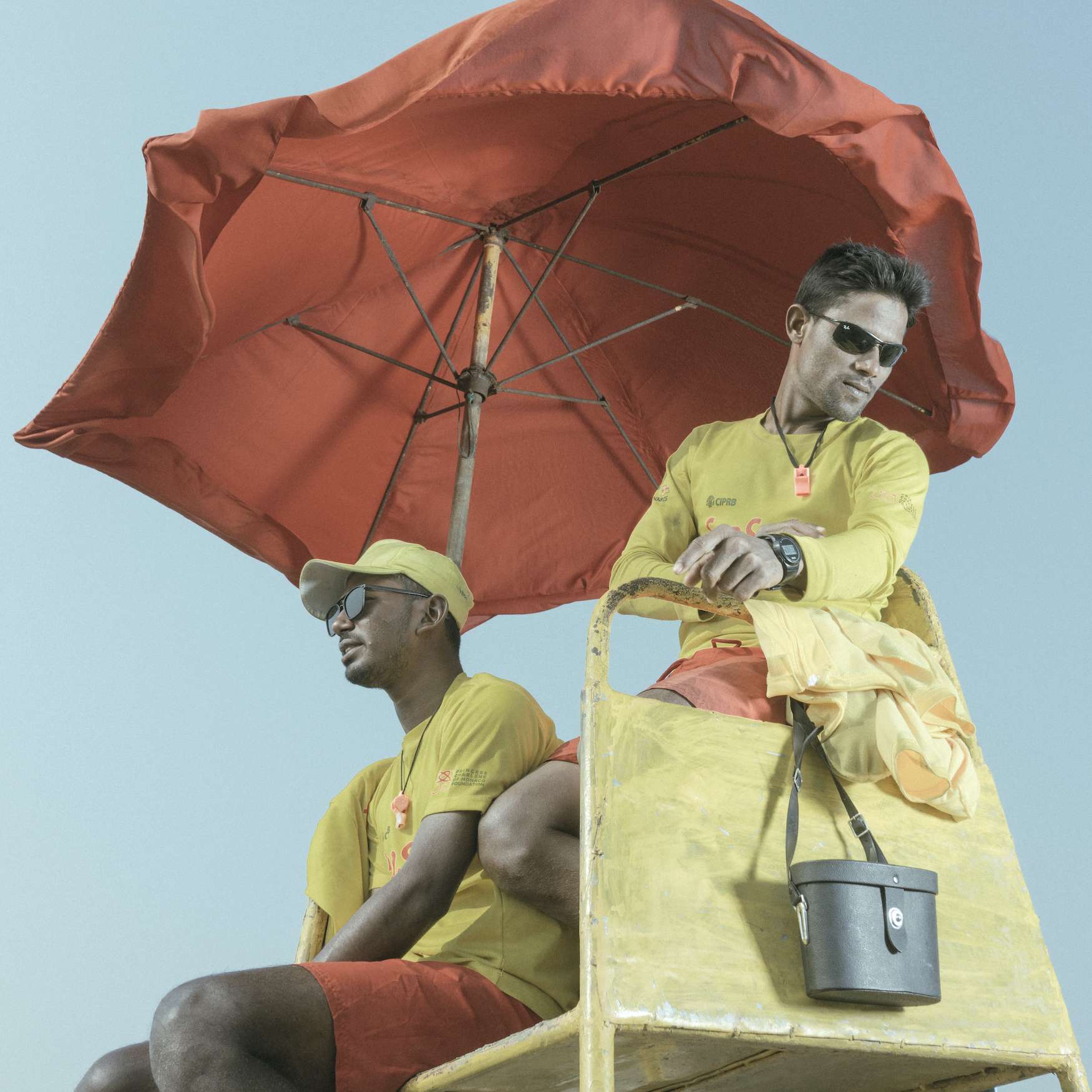Two Bangladeshi life guard at the beach of Cox’s Bazar © Ismail Ferdous
For his Leica Award-winning body of work, Sea Beach, Ismail Ferdous returned to the seaside of his childhood. For millions across Bangladesh, it is more than just a tourist destination
Ismail Ferdous vividly remembers his first visit to Cox’s Bazar Beach. At just four years old he took his very first train to reach the popular tourist spot – a memory that still fills him with joy. Wearing red shorts and a visor but unable to swim, he stood and allowed the waves to crash against him. He wandered across the sand, sketching and gathering shells with his mother. He was delighted and exhilarated by this new and beautiful place.
Spanning 120 kilometres along the Bay of Bengal, Cox’s Bazar is often referred to as the longest natural salt water beach in the world. It is popular among generations of Bangladeshis from all 64 of the country’s districts, attracting millions of visitors each year. It is a bustling hub of traditions, a melting pot of cultures – and, since 2020, it has been the subject of Ferdous’ Leica award-winning body of work, Sea Beach.
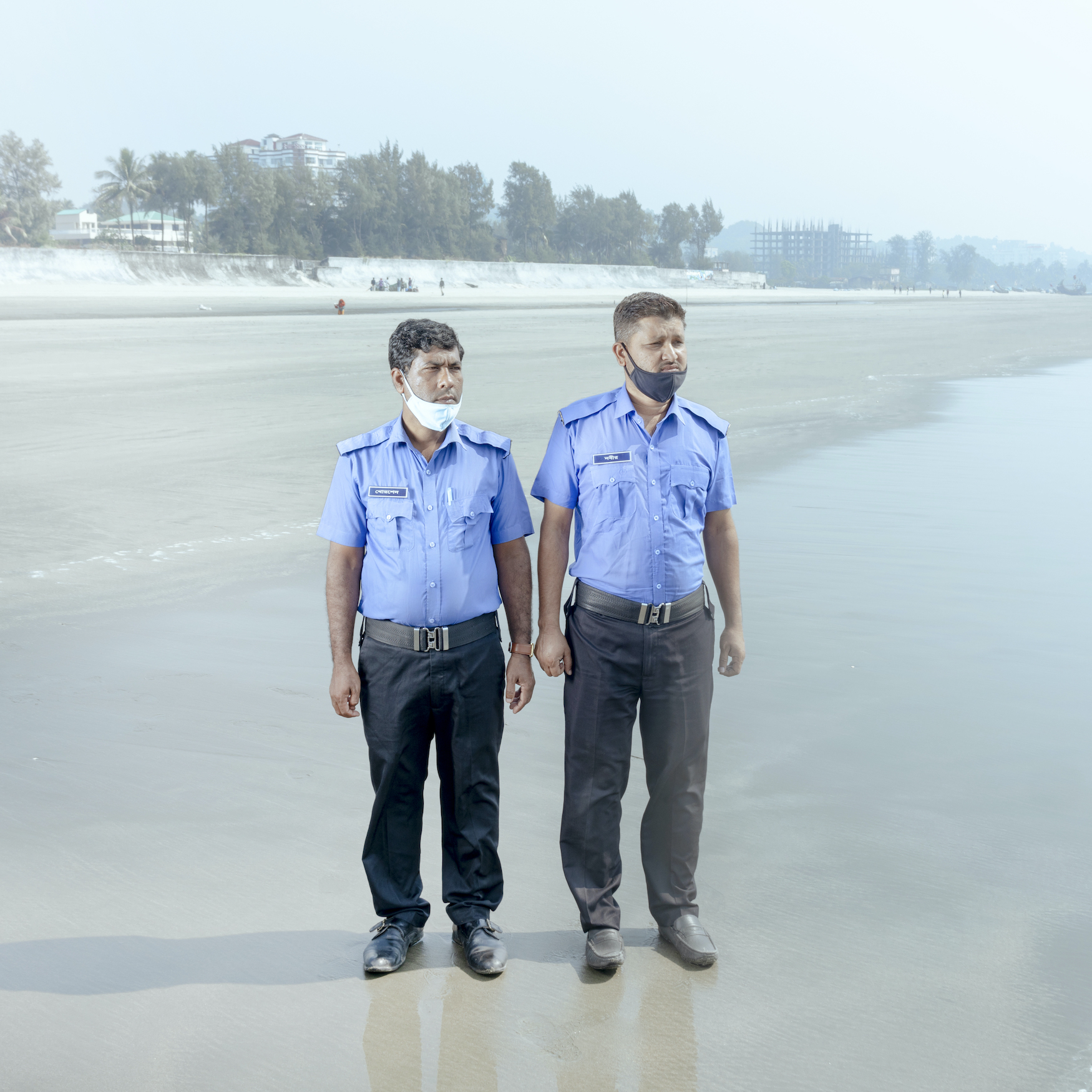
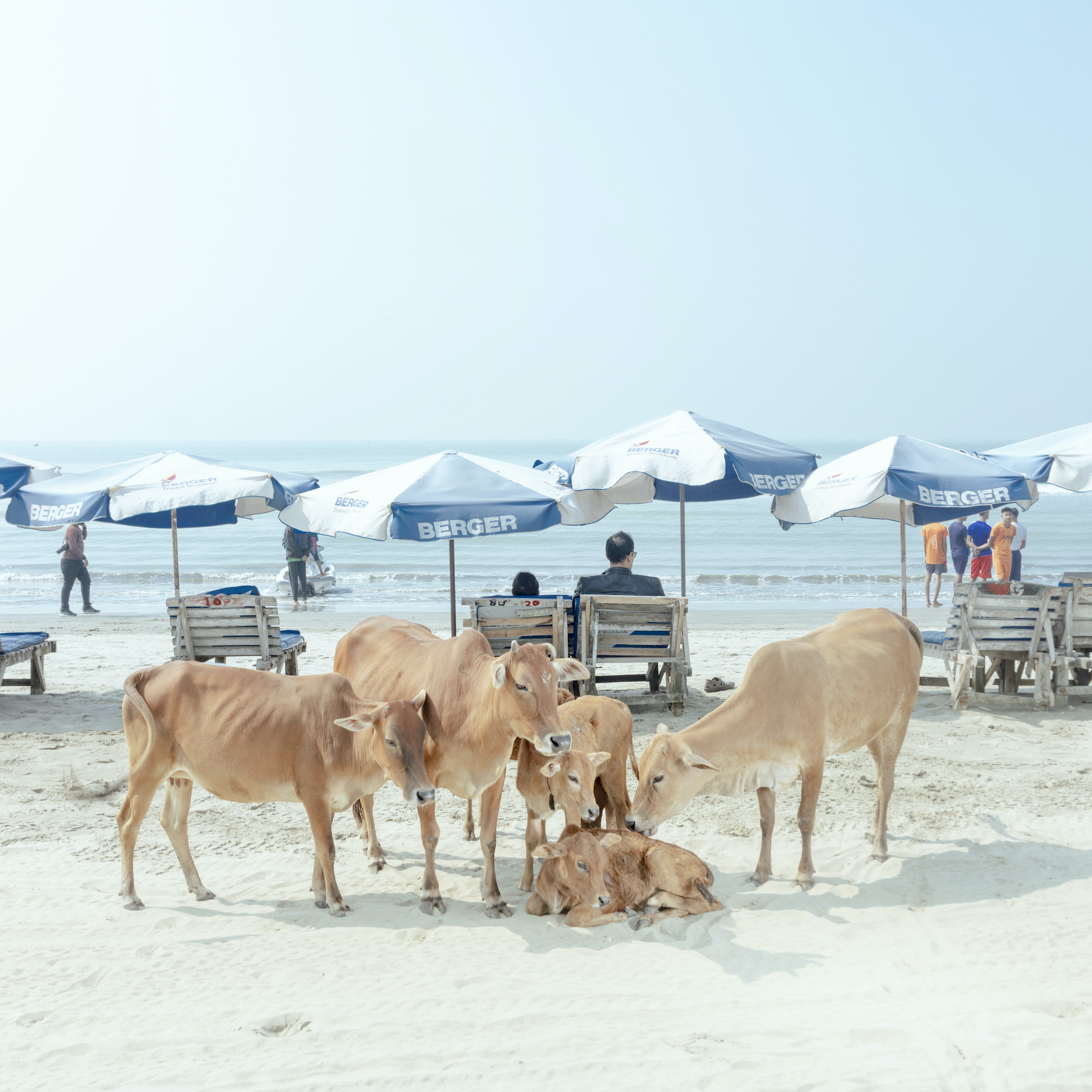
“This photo series emerged from my deep emotional connection to the place,” the photographer says. “In this work, everything exists between the sunlight and the light from the sea.” Ferdous’ images capture what he describes as the beach’s Bengali essence. In contrast with western tourists, his subjects are elegantly dressed, with many women choosing saris and men donning suits to enjoy seaside walks and beach games. Sunbathing is not a common activity at Cox’s Bazar Beach, though some do take to the water, occasionally while still fully dressed.
“Having been cradled by both these worlds, I’ve come to cherish the unique offerings of each beach culture,” says Ferdous, who has spent much of the last decade living and working in New York. “Whether it’s the laid-back allure of the west or the bustling vibrancy of Bangladesh, both have sculpted unforgettable imprints on my heart, teaching me to relish the authentic flavours they unfurl.” It is, the photographer continues, the diversity of narratives represented by beaches worldwide that make them such mesmerising places.
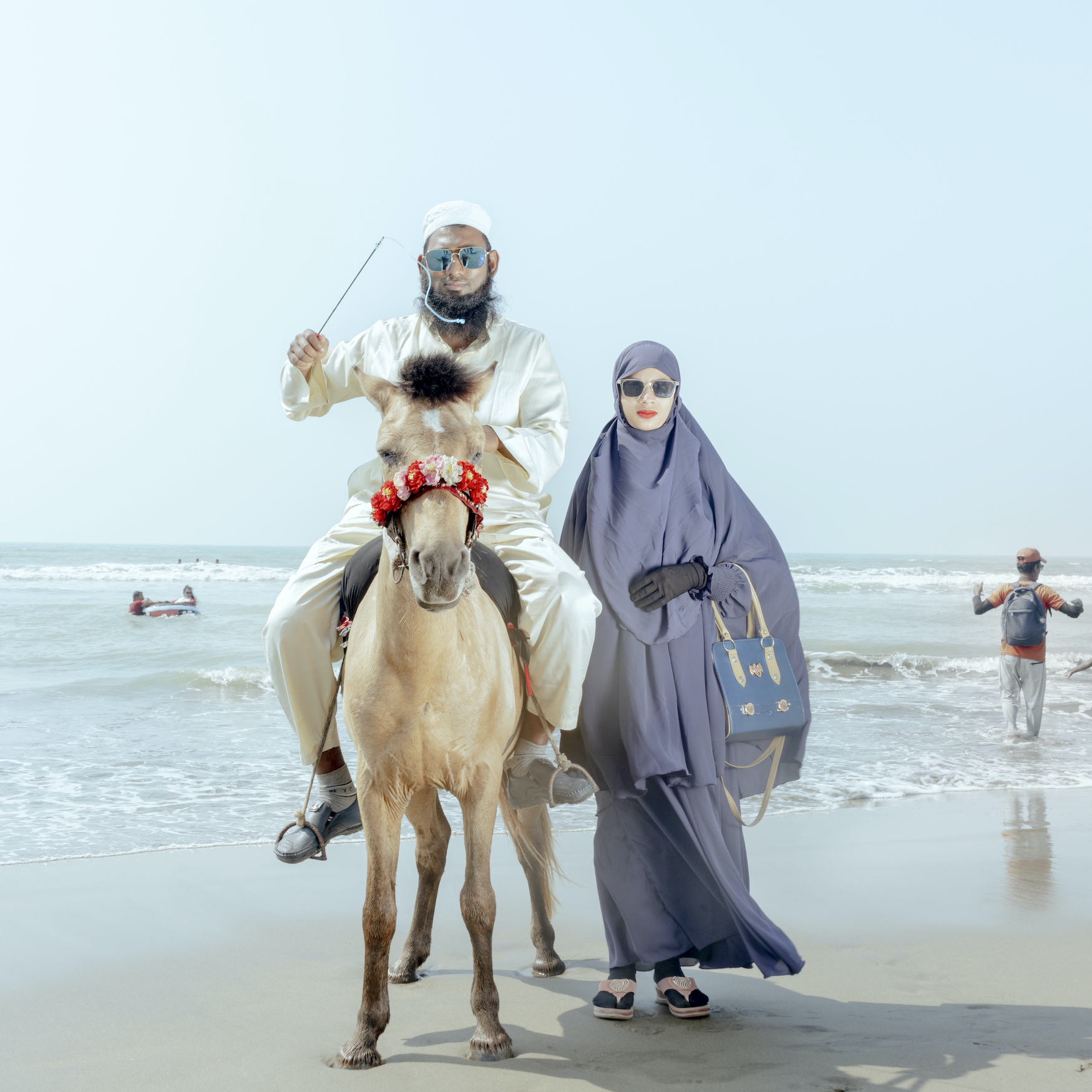
[The series] prompts viewers to question: how often are images from the global south showcased in a light of leisure or happiness, rather than just catastrophe or conflict? – Ismail Ferdous
Ferdous’ connection to Cox’s Bazar Beach is reflected in the visual language of his images. Created across four years, always at midday during the winter months, the photographer hoped the pale, radiant light he chose would offer viewers something new. There was also, he admits, a selfish element to his decision: he sought to rebel against what he describes as monotonous photographic styles, and to satiate his own curiosity.
Perhaps more importantly, Ferdous hoped that his wistful and in many ways idyllic style would offer a much-needed alternative to portrayals of the Global South through a western lens. “The series isn’t just a collection of aesthetically pleasing images; it carries a political undertone,” he explains. “It prompts viewers to question: how often are images from the Global South showcased in a light of leisure or happiness, rather than just catastrophe or conflict? Above all, this series seeks to uphold human dignity and celebrate humanity.”
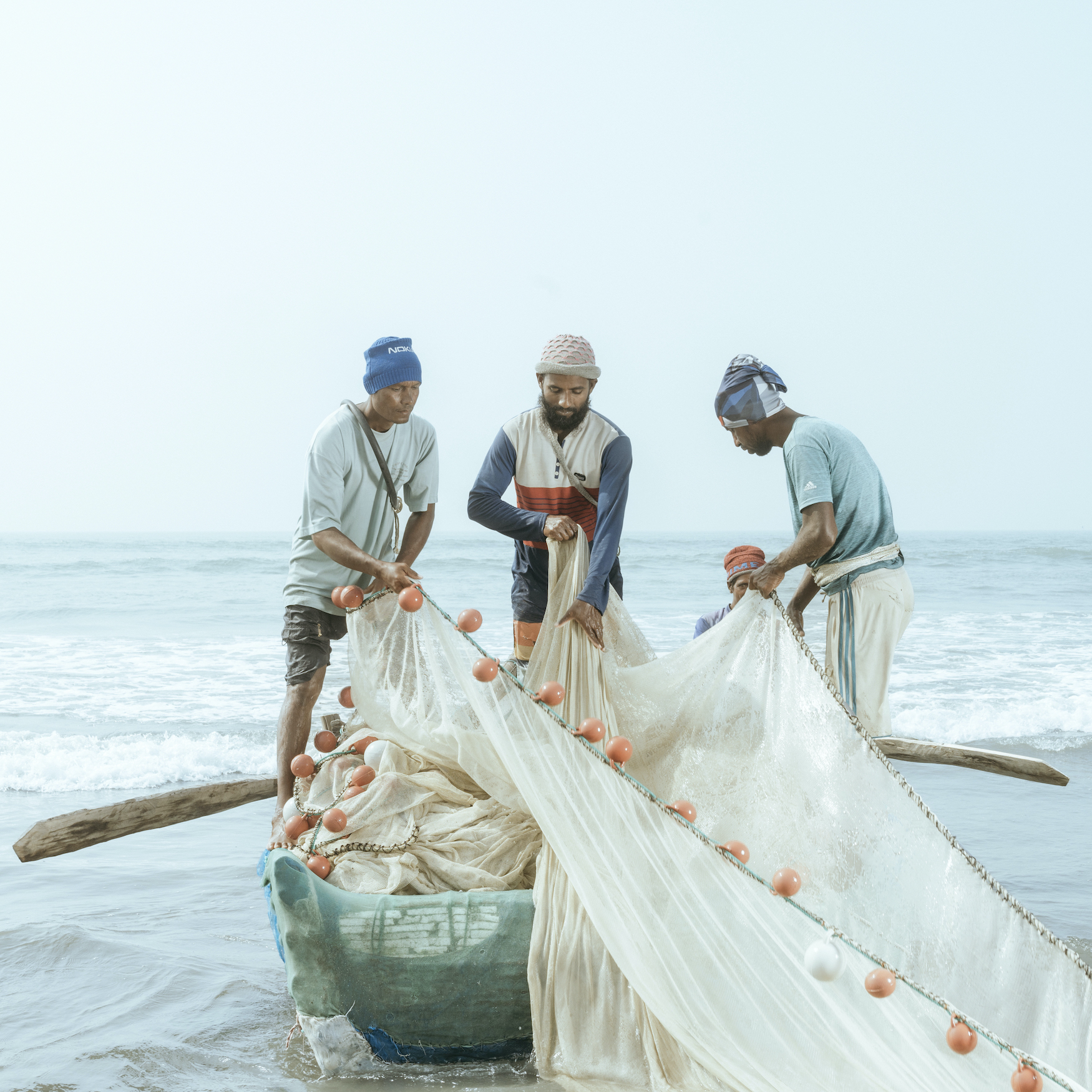
It is this final goal that Ferdous aims to continue working towards using the 40,000 euros (£34,800) granted to him by the The Leica Oskar Barnack Award. He says the prize, which also includes Leica equipment valued at 10,000 euros (£8,700), has strengthened his belief in his work, ensured that future projects will come to fruition, and helped his career. He describes his place in a worldwide touring exhibition, offered to the award’s winning and shortlisted photographers, as an incredible honour, which has already led to increased attention.
Thirty years on from his first visit to Cox’s Bazar – and after many happy days subsequently spent there – Ferdous has noticed some changes to his beloved beach. Lifeguards have been introduced, and a growing interest in watersports has led to a thriving surf culture, particularly among younger visitors. However, in his eyes, the place remains unchanged. “Cox’s Bazar in Bangladesh isn’t just a sandy retreat,” he says, “it’s a mosaic of traditions, an intersection of countless lives seeking both solace and sustenance.”

